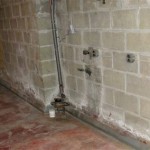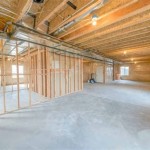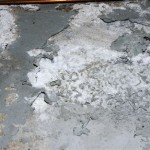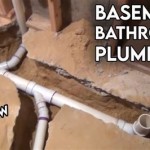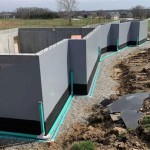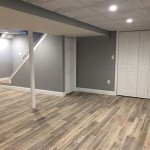Walk Out Basement Retaining Wall: Essential Aspects to Consider
Walkout basements extend living spaces outside the house, offering an additional level of functionality and aesthetic appeal. However, to ensure the safety and integrity of these structures, it is crucial to consider the retaining wall that supports the exposed foundation wall.
### Types of Retaining Walls for Walk Out Basements *Gravity Walls:
Constructed from large, interlocking blocks without reinforcement, these walls rely on their weight and friction to resist lateral soil pressure. They are suitable for smaller heights and low soil pressure. *Cantilevered Walls:
Reinforced concrete walls that extend below the ground and are anchored with anchors or soil nails to resist overturning. These walls are suitable for higher heights and more significant soil pressure. *Sheet Pile Walls:
Walls consisting of interlocking steel sheets driven into the ground. They are commonly used in areas with high groundwater or poor soil conditions. ### Design Considerations for Walk Out Basement Retaining Walls *Soil Conditions:
The type of soil, its density, and moisture content will influence the design of the retaining wall. *Height of Wall:
The height of the exposed foundation wall and the slope of the surrounding ground will determine the required height of the retaining wall. *Lateral Soil Pressure:
The pressure exerted by the soil on the retaining wall must be carefully calculated to ensure its stability. *Water Drainage:
Proper drainage behind the retaining wall is essential to prevent water buildup and potential failure. *Frost Heave:
In areas prone to freeze-thaw cycles, measures must be taken to prevent frost heave from damaging the wall. ### Materials and Construction Considerations *Concrete:
Reinforced concrete is a common choice for walk out basement retaining walls due to its strength, durability, and versatility. *Block Walls:
Manufactured concrete blocks can be used to construct retaining walls, but they require additional reinforcement and may not be suitable for very high heights. *Steel:
Steel sheet pile walls or concrete walls with embedded steel reinforcement can provide excellent strength and stability for high-profile retaining walls. *Installation:
The retaining wall must be properly installed according to engineered specifications, with adequate drainage and backfill compaction. ### Safety and Maintenance *Inspections:
Regular inspections should be conducted to check for any cracks, movement, or signs of failure. *Maintenance:
Over time, the retaining wall may need repairs, such as repointing mortar joints or replacing damaged sections. *Vegetation:
Control vegetation near the retaining wall to prevent roots from weakening the structure. *Grading:
Maintain proper grading around the retaining wall to ensure proper drainage and prevent water buildup. ### Conclusion Walk out basement retaining walls are crucial for maintaining the stability and longevity of these structures. By carefully considering the type of wall, design considerations, materials, and safety measures, you can ensure the integrity and functionality of your walkout basement for years to come.
Retaining Walls

Terrain Walkout Basement Retaining Walls Chief Architect Youtube

Basement Systems Usa Egress Photo Album Walkout In Elkton Md

Retaining Walls And Walk Out Basement Details Custom Homes By Tompkins Construction

Retaining Walls And Walk Out Basement Details Custom Homes By Tompkins Construction

Walkout Basement Retaining Wall Walls 42 Created A Walk Out Back Yard Front House Patio Entrance

Retainer Wall Build And Planting A Dry Creek Bed Creative Cain Cabin

Groundworks Gallery

Segmental Retaining Walls Mike Stacy Landscaping

Walkout Basement With Limestone Tiered Retaining Walls

